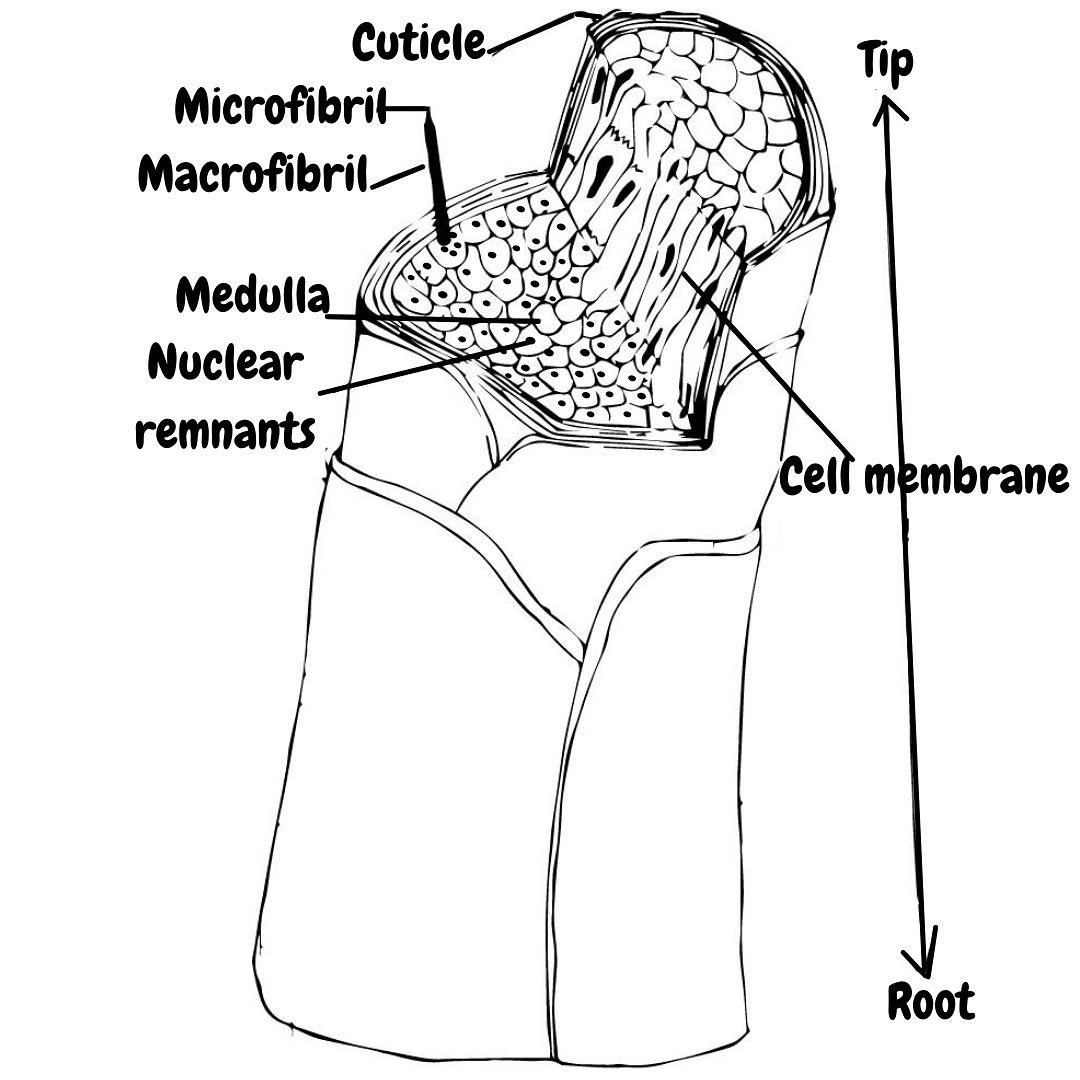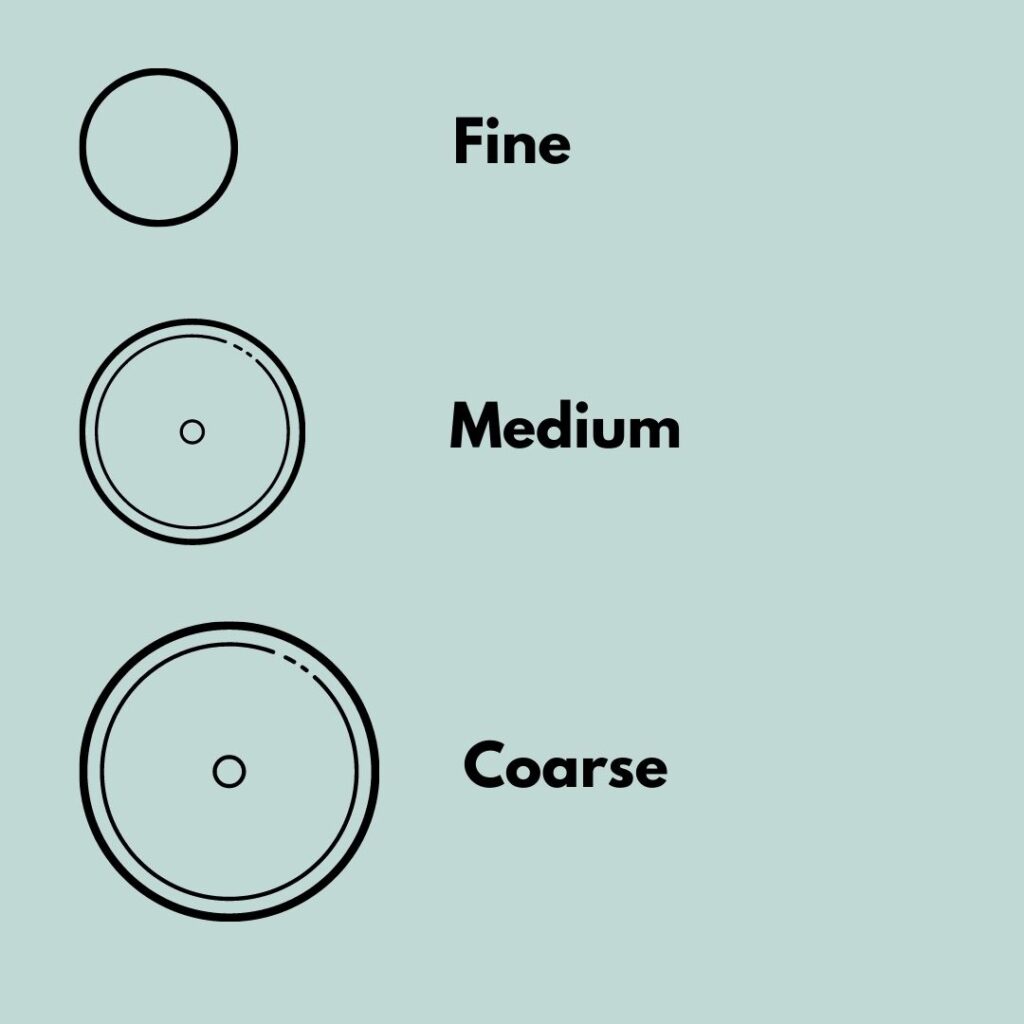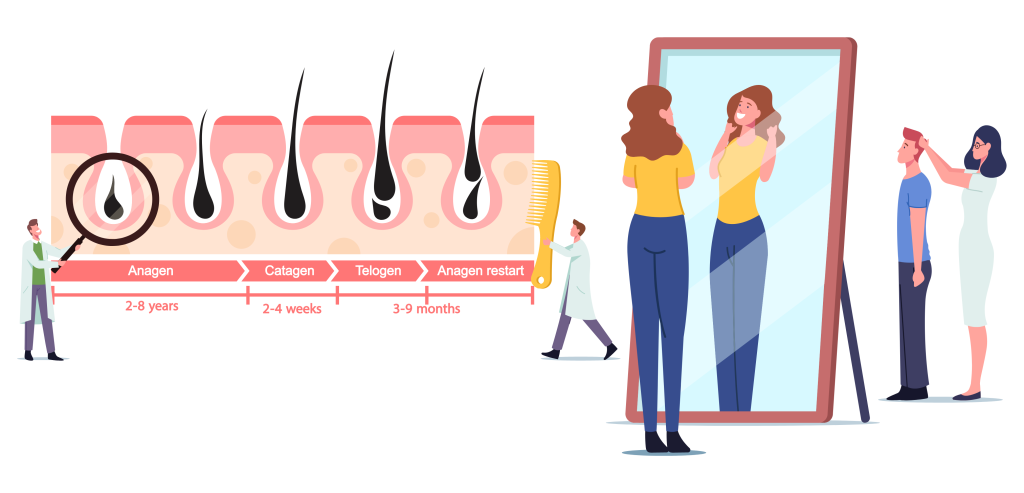Hair Health and Anatomy – Canterbury Hair & Scalp Clinic
Anatomy and Structure
Hair is made up of three layers: the cuticle, the cortex and the medulla.

The Cortex
The cortex makes up the main bulk of the hair and helps determine the texture: dry, damaged, low water content. Melanin the colour pigment is present in the cortex and determines the colour of the hair. No melanin present and the hair will appear grey but will actually be colourless.
Hair is a protein made up of amino acids, that’s why it’s important to make sure you are eating enough protein for optimal hair health and it’s better digested earlier in the day especially as we age.
The Cuticle
The function of the cuticle is to protect and hold together the hair. It consists of roughly 5-10 overlapping translucent keratin scales which are hard and protect the hair from losing moisture. Our natural oil or sebum helps to coat the hair and stop moisture from escaping. It can also stop moisture from being able to get into the hair along with other oil.
The Medulla
Not all hairs contain a medulla, this depends on the thickness or diameter. The medulla if present is the central part.
Texture
The texture of your hair can depend on how fine your hair is. People with fine hair tend to have more hairs and the diameter is thinner so there is more room for hair follicles on the scalp, whereas people with thicker hair may have less hairs on their head but the diameter is thicker and they can be course and rough but not always. Thicker hair may not get as oily as there could be less sebaceous glands as they are attached to the hair follicles and if there are less follicles then there could be less sebum.
Our hair follicles develop in utero at around 19weeks and we are born with all of our hair follicles. We can not grow new hair follicles.

It is not oil that hydrates our hair. It is water and the surfactants in shampoo draw water into the inside of our hair. Oil can not get through our cuticles, it’s there to protect the cuticles and to stop moisture from escaping.
The Hair Growth Cycle
The hair growth cycle consists of 3 distinct phases, the anagen phase, the catagen phase and the telogen phase.
Anagen Phase
Miotic activity starts in the dermal papilla which is at the base of the epithelial sac which creates the hair matrix. This is the longest phase where the cells are keratinising and then grow out of the scalp or derma after which they are dead keratin cells.
The anagen phase lasts between 2-7 years and can go up to 11.
Catagen Phase
In this phase of the hair growth cycle, blood flow is no longer received and mitotic activity ceases. The inner root sheath disintegrates and the outer root sheath constricts. This lasts about two weeks.
Telogen Phase
Known as the resting phase, this is the last phase of the hair growth cycle and it lasts between 2-4 months. The hair remains in the epithelial sac and carries on keratinising but is un-pigmented and once the hair eventually comes out it will appear bulb like at the root due to this. The hair is simply resting in the epithelial sac whilst the next anagen hair is underway.
Exogen Phase
This is where the hair sheds and exits the scalp.

